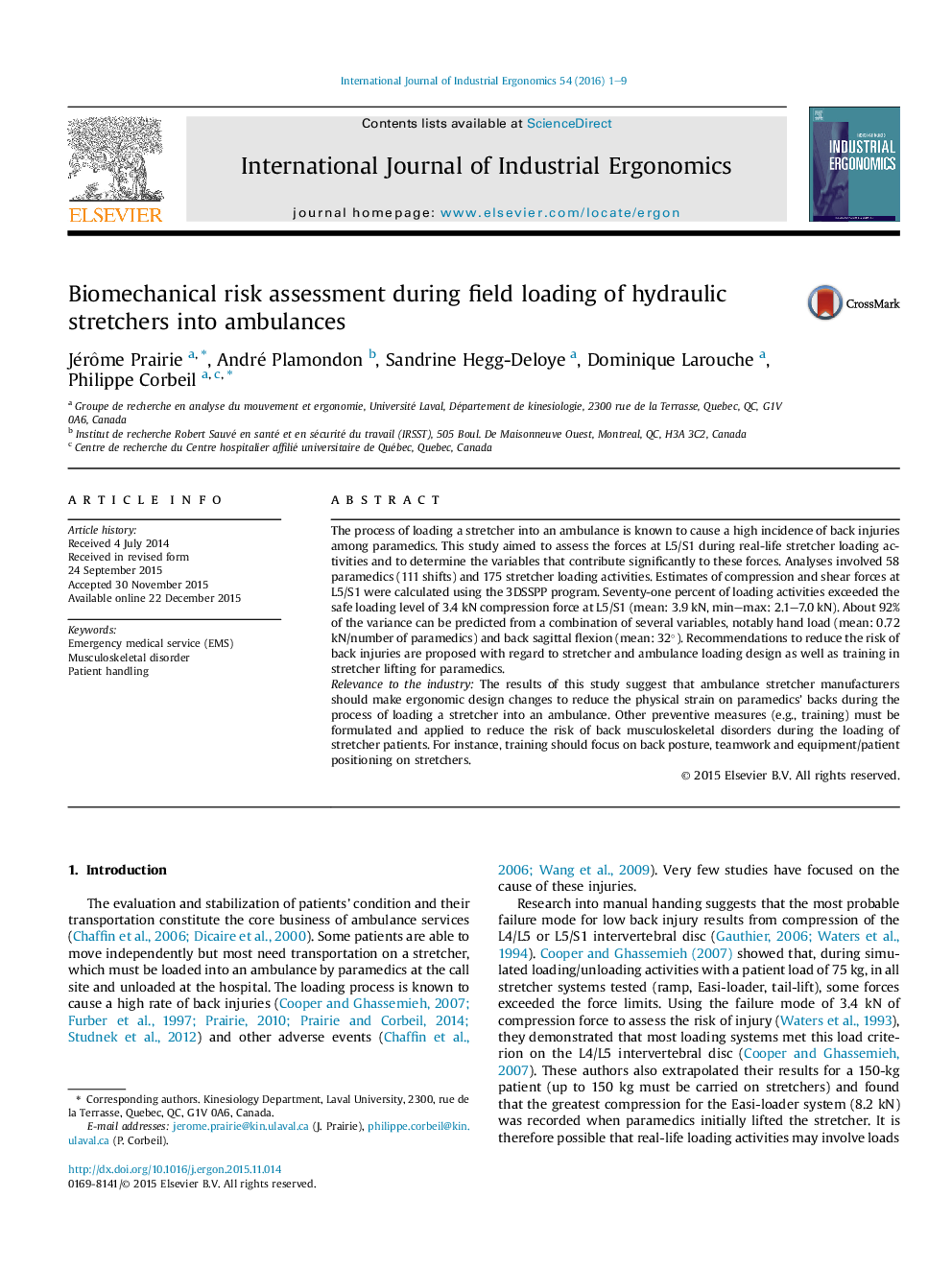| Article ID | Journal | Published Year | Pages | File Type |
|---|---|---|---|---|
| 1095775 | International Journal of Industrial Ergonomics | 2016 | 9 Pages |
•58 paramedics were observed in the field and 175 loading activities were analyzed.•71% of loading stretcher activity exceeded the compression criterion limit.•Principal factors influencing the risk: hand load, posture and paramedic's weight.•Hydraulic stretcher mass must be decreased and lifted by a team.•Training should focus on back posture and equipment/patient positioning on stretcher.
The process of loading a stretcher into an ambulance is known to cause a high incidence of back injuries among paramedics. This study aimed to assess the forces at L5/S1 during real-life stretcher loading activities and to determine the variables that contribute significantly to these forces. Analyses involved 58 paramedics (111 shifts) and 175 stretcher loading activities. Estimates of compression and shear forces at L5/S1 were calculated using the 3DSSPP program. Seventy-one percent of loading activities exceeded the safe loading level of 3.4 kN compression force at L5/S1 (mean: 3.9 kN, min–max: 2.1–7.0 kN). About 92% of the variance can be predicted from a combination of several variables, notably hand load (mean: 0.72 kN/number of paramedics) and back sagittal flexion (mean: 32°). Recommendations to reduce the risk of back injuries are proposed with regard to stretcher and ambulance loading design as well as training in stretcher lifting for paramedics.Relevance to the industryThe results of this study suggest that ambulance stretcher manufacturers should make ergonomic design changes to reduce the physical strain on paramedics’ backs during the process of loading a stretcher into an ambulance. Other preventive measures (e.g., training) must be formulated and applied to reduce the risk of back musculoskeletal disorders during the loading of stretcher patients. For instance, training should focus on back posture, teamwork and equipment/patient positioning on stretchers.
